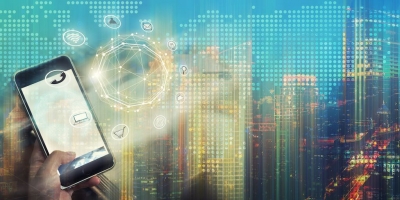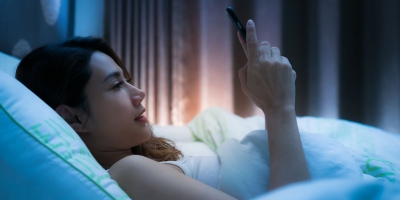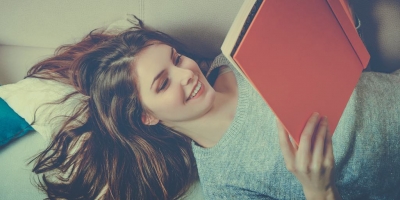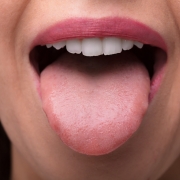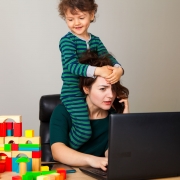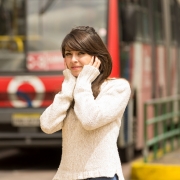How Technology (and Light) Affect Sleep
As the sun recedes, nighttime approaches. The light fades and the darkness crawls in. It welcomes you to do the same: crawl into your bed and retire for the night. The darkness is like a blanket. Tuck into its warmth and the outside world quiets, allowing your internal world to do the same.
If you’re like many these days, though, turning in for the night is not so simple. It’s become increasingly difficult to put the phone (or other tech device) away when the nighttime beckons. And the next morning is no different. Modern life is built around technology. It’s likely become integral to how you work and interact with others. And unfortunately, even bedtime and morning routines are no longer exempt from technology’s touch.
Phone to Bed, Phone to Rise
Whether it’s morning, noon, or night, it seems the smart phone or another tech device isn’t far. Many rely on phones to tell them when to wake up and even remind them when to go to bed. Many doing desk jobs find that work revolves around a screen. Computers keep people connected to colleagues, provide easy communication, and keep schedules organized.
It doesn’t stop at the office exit doors. Recreation and relaxation have come to center around technology. Increasing internet speeds, accessibility of streaming video, and game consoles have started to monopolize how people choose to spend their downtime.
Completely freeing yourself from screens would be hard—and unnecessary. There’s nothing inherently wrong with enjoying screen-based entertainment. But indulging for hours, especially at night, could harm your body’s natural circadian rhythm.
This disruption can throw off your sleep schedule. Turning in later not only decreases the quantity of sleep, but likely the quality, too. But why? How is ticking away the hours with your phone different than curling up with a book (a paperback, not an e-book)? Let’s find out how technology affects sleep. Dive into the science behind blue light, the body’s sleep process, and how they interact.
The Blues of Blue Light
Your ancestors lived by the sun. As it rose, they awoke. As it set, they turned in and slept. Before electricity, the world went dark with the disappearance of the sun, save for some candlelight. This means the human body became accustomed to the rhythms of light and dark. Internal processes adapted to match what was happening in the external world.
When lightbulbs lit up the world stage, things began to change. Humans no longer had a reason to turn in early, because light could be created at will. But the lightbulb’s glow was different than the blue light emitted by digital screens.
But what exactly is blue light? Natural sunlight is white light. But if broken down into its components, you’ll find the rainbow: violet, indigo, blue, green, yellow, orange, and red. Each of these types of light have a different energy and wavelength. Light on the bluer end of the spectrum carries higher energy in shorter wavelengths.
Sunlight is blue-heavy, so this energetic light keeps you awake and alert. In fact, blue light actually suppresses your body’s secretion of melatonin, the sleep hormone. This is why your body naturally wants to wake up in the morning. Dusk is the opposite. As the sun recedes, the residual light is steeped in red (lower energy, longer wavelength). This means red light has the opposite effect of blue, and doesn’t suppress melatonin. So, it doesn’t interfere with your natural circadian rhythm.
Screens are the Key to How Technology Affects Sleep
Now that you have an understanding of blue light as it relates to natural sunlight, it’s time to shift the focus to artificial, screen-based lights.
Screens (your phone, tablet, computer, or television) emit blue light that interact with cells deep behind the eyes. In simplest terms, when your eyes take in blue light, a couple of things happen. These cells express a protein that goes on to communicate with a specific part of the brain. Together, these events help synchronize your circadian rhythm with the sun.
Basically, when you take in blue light, your brain tells you it’s time to wake up or stay awake. With this knowledge, the impact of screens on the quality and cycles of your sleep starts to become clear. And the question of whether time with a screen or behind a book is better is no longer a mystery.
Let’s drive this point home with some scientific research.
In a small study, researchers divided individuals into three groups and asked them to interact with a digital tablet for two hours before bed. Group 1 wore goggles fitted with blue-emitted LEDs. This was known as the “true positive” group, since blue light is known to suppress melatonin. Group 2 wore orange-tinted glasses to filter out blue light (the “dark control” group). Group 3 weren’t given goggles or glasses.
The findings were enlightening.
After two hours of light exposure, participants in groups 1 and 3 experienced significant reduction in melatonin levels compared to the dark control group. Compare this experiment to a real-life example, like a two-hour long feature film. If you go to a late evening showing (without your orange-tinted goggles), the movie will likely affect your melatonin levels and discourage your body from readying itself for sleep.
Does Blue Light Mean a Blue Mood?
Perhaps this isn’t news to you. You may already intuitively understand that excessive time behind a screen isn’t natural or especially healthy. But are you aware of the emotional effects blue light—both too much and too little—can have? Getting the right amount of light, at the right time is key for maintaining your mood.
Shift work (graveyard shifts) and jet lag give glimpses into the effect of light (or lack thereof) on mood. Those who work late and sleep during the day often experience shifts in mood or irritability. Likewise, those who travel across time zones struggle adjusting to a new sleeping schedule. Temporary insomnia imposed by travel can leave you feeling edgy, exhausted, and emotionally off kilter.
Additionally, those who experience seasonal affective disorder (SAD) struggle with shorter days with shorter periods of natural light. Some find comfort with SAD lamps, or light therapy. Light therapy is a possible treatment for SAD.
Light therapy is simple and can be done at home. A light therapy box (or SAD lamp) emits bright light that mimics the wavelength of natural light. Flooding the face and eyes with this bright light can help offset some of the mood shifts that come with the lack of natural light in the winter months. It can also help those who struggle with some sleep disorders, or adjusting to a graveyard shift.
Animal studies have offered additional clues. Researchers have noticed anxious and depressive symptoms in mice forced to live in constant light or constant darkness. While “constant light” might sound uplifting, consider your newfound knowledge. It also means constant blue light. That means that the eyes and brain are constantly stimulated, making rest hard to come by.
When you extrapolate similar conditions to humans, it’s not hard to imagine similar consequences. Humans experience the same affects under constant blue light. You need light to play and you seek darkness for rest.
Loosening Blue Light’s Grip on Your Sleep
Technology is the future, and screens are not going away anytime soon—if ever. It’s a fair assumption that most don’t want to risk social isolation by foregoing screens completely. Luckily, you can stay plugged in without damaging your physical and emotional wellness. Take a look at some ideas for finding a healthy balance:
- Limit or eliminate your screen usage at a certain time. Remember the two-hour tablet study. Try turning off (or putting away) your devices more than two hours before bed. Going cold turkey might be hard. Try doing this in 30-minute increments, increasing the time before bed as you get more comfortable.
- Swap out your wind-down activities. Opt for something that soothes, rather than excites your brain. This could be reading, journaling, or walking. Any activity that doesn’t involve, or at least doesn’t depend on, a screen to function, will do.
- Add a blue-light filter to all of your devices. If you use Apple products, open the control center from your home screen. You might be familiar with the brightness icon, which allows you to control the intensity of light coming out of your screen. However, if you firmly hold down on the button, a new view will appear. Tap the button below the brightness meter (the image is a moon inside a sun). Turning this on will filter out most of the blue light. If you’re using a laptop or desktop, look up applications that provide the same function. Google Chrome has various extension options (like “Screen Shader”). You can also download an app like “f.lux.”
Screens might be here to stay, but that doesn’t mean they must rule the entirety of your days and nights. Armed with this new information about how technology affects sleep, all you need is a little bit of forethought and planning to reclaim a regular, restful routine. Maybe a tip from the list above resonates with you. Or you can find something better that integrates to your life. Either way, it’s possible to balance your screen usage and limit your exposure to blue light.
About the Author
Jenna Templeton is a health educator and freelance science writer living in Salt Lake City, Utah. After receiving a bachelor of science degree in chemistry from Virginia Tech, Jenna spent five years as a research scientist in the nutritional industry. This work fueled her interest in personal wellness, leading her to pursue a graduate degree in Health Promotion & Education from the University of Utah. Outside of work, Jenna enjoys live music, gardening, all things food, and playing in the Wasatch mountains.
References
“Blue Light and Your Eyes.” Prevent Blindness.
“How Smartphones Hurt Sleep.” The Atlantic.
“Scary Ways Technology Affects Your Sleep.” Sleep.org.
Wood B; Rea MS; Plitnick B; Figueiro MG. 2013. Light level and duration of exposure determine the impact of self-luminous tablets on melatonin suppression. Applied Ergonomics. 44(2): 237-240.



